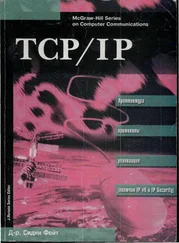As I write, crime gangs have been making ever more use of spear-phishing in targeted attacks on companies where they install ransomware, steal gift coupons and launch other scams. In 2020, a group of young men hacked Twitter, where over a thousand employees had access to internal tools that enabled them to take control of user accounts; the gang sent bitcoin scam tweets from the accounts of such well-known users as Bill Gates, Barack Obama and Elon Musk [1294]. They appear to have honed their spear-phishing skills on SIM swap fraud, which I'll discuss later in sections 3.4.1and 12.7.4. The spread of such ‘transferable skills’ among crooks is similar in many ways to the adoption of mainstream technology.
Getting your staff to resist attempts by outsiders to inveigle them into revealing secrets, whether over the phone or online, is known in military circles as operational security or opsec. Protecting really valuable secrets, such as unpublished financial data, not-yet-patented industrial research and military plans, depends on limiting the number of people with access, and also on doctrines about what may be discussed with whom and how. It's not enough for rules to exist; you have to train the staff who have access, explain the reasons behind the rules, and embed them socially in the organisation. In our medical privacy case, we educated health service staff about pretext calls and set up a strict callback policy: they would not discuss medical records on the phone unless they had called a number they had got from the health service internal phone book rather than from a caller. Once the staff have detected and defeated a few false-pretext calls, they talk about it and the message gets embedded in the way everybody works.
Another example comes from a large Silicon Valley service firm, which suffered intrusion attempts when outsiders tailgated staff into buildings on campus. Stopping this with airport-style ID checks, or even card-activated turnstiles, would have changed the ambience and clashed with the culture. The solution was to create and embed a social rule that when someone holds open a building door for you, you show them your badge. The critical factor, as with the bogus phone calls, is social embedding rather than just training. Often the hardest people to educate are the most senior; in my own experience in banking, the people you couldn't train were those who were paid more than you, such as traders in the dealing rooms. The service firm in question did better, as its CEO repeatedly stressed the need to stop tailgating at all-hands meetings.
Some opsec measures are common sense, such as not throwing sensitive papers in the trash, or leaving them on desks overnight. (One bank at which I worked had the cleaners move all such papers to the departmental manager's desk.) Less obvious is the need to train the people you trust. A leak of embarrassing emails that appeared to come from the office of UK Prime Minister Tony Blair and was initially blamed on ‘hackers’ turned out to have been fished out of the trash at his personal pollster's home by a private detective [1210].
People operate systems however they have to, and this usually means breaking some of the rules in order to get their work done. Research shows that company staff have only so much compliance budget , that is, they're only prepared to put so many hours a year into tasks that are not obviously helping them achieve their goals [197]. You need to figure out what this budget is, and use it wisely. If there's some information you don't want your staff to be tricked into disclosing, it's safer to design systems so that they just can't disclose it, or at least so that disclosures involve talking to other staff members or jumping through other hoops.
But what about a firm's customers? There is a lot of scope for phishermen to simply order bank customers to reveal their security data, and this happens at scale, against both retail and business customers. There are also the many small scams that customers try on when they find vulnerabilities in your business processes. I'll discuss both types of fraud further in the chapter on banking and bookkeeping.
Finally, a word on deception research. Since 9/11, huge amounts of money have been spent by governments trying to find better lie detectors, and deception researchers are funded across about five different subdisciplines of psychology. The polygraph measures stress via heart rate and skin conductance; it has been around since the 1920s and is used by some US states in criminal investigations, as well as by the Federal government in screening people for Top Secret clearances. The evidence on its effectiveness is patchy at best, and surveyed extensively by Aldert Vrij [1974]. While it can be an effective prop in the hands of a skilled interrogator, the key factor is the skill rather than the prop. When used by unskilled people in a lab environment, against experimental subjects telling low-stakes lies, its output is little better than random. As well as measuring stress via skin conductance, you can measure distraction using eye movements and guilt by upper body movements. In a research project with Sophie van der Zee, we used body motion-capture suits and also the gesture-recognition cameras in an Xbox and got slightly better results than a polygraph [2066]. However such technologies can at best augment the interrogator's skill, and claims that they work well should be treated as junk science. Thankfully, the government dream of an effective interrogation robot is some way off.
A second approach to dealing with deception is to train a machine-learning classifier on real customer behaviour. This is what credit-card fraud engines have been doing since the late 1990s, and recent research has pushed into other fields too. For example, Noam Brown and Tuomas Sandholm have created a poker-playing bot called Pluribus that beat a dozen expert players over a 12-day marathon of 10,000 hands of Texas Hold 'em. It doesn't use psychology but game theory, playing against itself millions of times and tracking regret at bids that could have given better outcomes. That it can consistently beat experts without access to ‘tells’ such as its opponents' facial gestures or body language is itself telling. Dealing with deception using statistical machine learning rather than physiological monitoring may also be felt to intrude less into privacy.
The management of passwords gives an instructive context in which usability, applied psychology and security meet. Passwords have been one of the biggest practical problems facing security engineers since perhaps the 1970s. In fact, as the usability researcher Angela Sasse puts it, it's hard to think of a worse authentication mechanism than passwords, given what we know about human memory: people can't remember infrequently-used or frequently-changed items; we can't forget on demand; recall is harder than recognition; and non-meaningful words are more difficult.
To place the problem in context, most passwords you're asked to set are not for your benefit but for somebody else's. The modern media ecosystem is driven by websites seeking to maximise both their page views and their registered user bases so as to maximise their value when they are sold. That's why, when you're pointed to a news article that's so annoying you feel you have to leave a comment, you find you have to register. Click, and there's a page of ads. Fill out the form with an email address and submit. Got the CAPTCHA wrong, so do it again and see another page of ads. Click on the email link, and see a page with another ad. Now you can add a comment that nobody will ever read. In such circumstances you're better to type random garbage and let the browser remember it; or better still, don't bother. Even major news sites use passwords against the reader's interest, for example by limiting the number of free page views you get per month unless you register again with a different browser. This ecosystem is described in detail by Ryan Holiday [915].
Читать дальше











